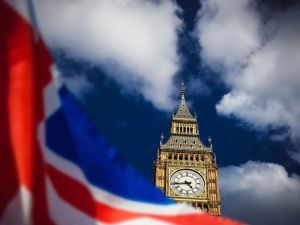Life has a special way of throwing curveballs at us. It can be in the form of unforeseen expenses or just major changes. While we can neither predict nor avoid these curveballs, we can definitely prepare for them.
When you are in your twenties, it’s easy to focus on the here and now. From attending the next music festival to planning the next backpacking trip halfway across the world, it’s difficult to imagine the life you’d have decades later. But this is where financial myopia – the tendency to focus only on the present – can trip us up. Because while enjoying life today is important, unexpected events don’t wait for a convenient time.
What if you took your car for a regular service appointment only to realise that you need to replace a very expensive part? Or what if you have to take an unexpected three-month break from work?
This is where a financial safety net comes in handy. It’s a versatile lifeboat that helps you stay afloat without falling into debt when something unexpected happens while ensuring that you still meet your long-term financial goals. Quite cool, right? And that’s not even the best part. You can build your financial plan in layers – each one suited for a different time horizon, from unexpected “right now” emergencies to “decades from today” retirement.
And here’s the key: your safety net isn’t just about saving money for the sake of it. It’s about being tactical and using the right financial wrappers and products. Products like Cash ISAs, Stocks & Shares ISAs, General Investment Accounts (GIAs), pensions, and Junior ISAs (JISAs) need to be optimally utilised to help your money work efficiently and tax-smart at every stage of life.
Understanding the three layers of a financial safety net
First layer: the emergency fund
This is probably the most obvious of all. You do not want to sell down your long-term investment or go knee-deep in credit card debt over unexpected expenses like the boiler breaking down or an emergency visit to the dentist. It is precisely why your first priority is an emergency fund – money you can get your hands on instantly.
On average, this should be approximately three to six months of essential expenses like rent, mortgage payments, and utilities. Therefore, if your monthly expenses are £1,500 then you should aim to save at least £4,500.
A Cash ISA can be a great option to create your emergency fund. Not only does the Cash ISA provide tax-free interest, but the money is easily accessible for use. This can be a great option to have for genuine emergencies.
These savings are similar to a safety cushion. Cash ISAs provide modest returns and returns depend on Bank of England base rates. Saving money in this product won’t make you rich, but it prevents financial shocks from becoming a full-blown financial crisis. Additionally, maintaining the purchasing power of the funds is beneficial, as it prevents erosion by inflation in the short term.
Once you have this foundation in place, you can confidently move to the next layer.
Second layer: medium-term growth with flexible investments
Now that we have a strong foundation to cover any unexpected expenses and emergencies, let’s move towards investments that you won’t need immediately.
The next question to ask yourself is, “What are my goals for the next 3-15 years?” Are you planning on saving up for a house? Starting your own business? Planning your dream wedding? Or want to help support your kids through school and university?
These medium to long-term goals require a different approach to investing. A Cash ISA may be great for the short term, but over the longer term, its value may get eroded by inflation. Our objective here is to make our money grow so that it outstrips inflation and helps you achieve your financial goals.
This is precisely where investing comes in. It gives your money the shot at growing faster than inflation while still keeping it accessible if you need it.
Stocks and Shares ISAs can be a great way to maximise your investment returns while making sure that taxes on the growth do not erode your investment returns. You can invest up to £20,000 each year within the ISA wrapper. You can choose to invest in single stocks, ETFs, funds, and bonds on your own, or choose to invest in managed portfolios and let our experts manage your investments for you. You can learn more about investing in a Stocks and Shares ISA here.
What if you maximise your £20,000 allowance for the year? You can still make your money work for you by investing in a General Investment Account (GIA). Although not exempt from taxes, GIAs can be a great way to supplement your ISA investments and ensure growth.
An important consideration when investing in Stocks and Shares is to consider your time horizon. If your investment goal is on the shorter-end, say three years, you may not want to take a lot of risk. However, if your time horizon is longer than seven years, you may choose to consider taking more risk based on your personal risk tolerance.
In short, a Stocks and Shares ISA is your first port of call when maximising your investments for medium to long-term goals, and once your ISA allowance gets extinguished, a GIA is your next best bet.
The second layer is your springboard. It gives your money the chance to grow to achieve your goals, while being readily available when you need it.
Third layer: long-term security
Now that you have a safety cushion and a springboard to cover the next few years, it’s time to think in decades. The final layer of your safety net is to secure your income when you retire, or setting up the next generation for success.
A pension is the cornerstone of long-term retirement planning. Although not as easily accessible as ISAs, a pension has benefits which are hard to beat. Chief among these is tax relief. When you contribute to a pension, the government effectively refunds the income tax you paid on that contribution. For example, if you pay £100 into your pension, the government automatically adds £25 in basic tax relief. This means that £125 will be invested on your behalf. If you are a higher-rate tax payer, you can claim further relief through self-assessment tax return. This makes pensions one of the most tax-efficient ways to save.
Pensions also provide the opportunity for employer contributions. Many employers will contribute alongside your own personal contributions, often by matching a percentage of what you pay in. This can significantly accelerate the growth of your retirement savings as you are not solely relying on your own funds.
Since pensions are designed to be invested over decades, they tend to generate long-term growth that typically outpaces inflation. However, it is important to note that they are locked until at least age 55 (rising to 57 from 2028), which means they should be viewed as long-term investments rather than for short- or medium-term liquidity.
You can choose to invest your pension in a managed portfolio, in a risk level that suits your tolerance. Expertly managed portfolios like the ones offered at Moneyfarm, can provide you with both long-term growth and peace of mind.
Would you also like to extend your safety net to your children? A Junior ISA can be a great way to do the same. With a £9,000 allowance each year, you can invest in JISA until your child turns 18. They are similar to ISAs because they are also tax-free wrappers. This can be a great way to not only teach your children the value of long-term investing, but also save up for expenses like university or helping them buy a house. Although designed to be more long-term, you can choose to invest in a JISA anytime before your child turns 18.
Together, Pension and JISA form the long-term anchor of your financial safety net.
How to make the best out of the three layers
To put things together, the first layer provides short-term resilience to protect you from shocks. The second layer provides you the opportunity to achieve your medium to long term goals. Finally, the third layer gives you the opportunity to secure your retirement and helps you secure your family’s future.
Each layer serves a different time horizon, but together they create balance: liquidity, growth, and security.
To make the best out of your safety net, keep the following in mind.
- Start with cash: build your emergency fund before investing.
- Use your allowances: use your tax efficient allowances first (ISAs, SIPPs).
- Automate contributions: turn saving into a habit. Pay yourself first.
- Consolidate accounts: keep old ISAs and pensions together for simplicity*.
- Review annually: adjust as your income, goals, and family situation change.
*Any fees, penalties, and enhanced benefits need to be taken into consideration prior to consolidating
Build confidence for the unexpected
Life is unpredictable. But with the right financial plan, you don’t have to face uncertainty with fear.
By layering your safety net with Cash ISAs, Stocks & Shares ISAs, GIAs, pensions, and JISAs, you’ll be prepared for emergencies today, flexible goals tomorrow, and long-term security in the future. So ask yourself: Which layer of my safety net needs attention right now?
At Moneyfarm, we make it simple to build and manage your safety net with ISAs and pensions tailored to your goals. With expert guidance and diversified portfolios, you can face life’s surprises with confidence.
If you would like to discuss your financial goals in detail and find out which options may make sense for you, please feel free to contact our investment consultant team.
By making an investment, your capital is at risk. The tax treatment of a Moneyfarm Stocks and Shares ISA and a Moneyfarm Pension depends on your individual circumstances and may be subject to change in the future. You should seek financial advice if you are unsure about investing.
*As with all investing, financial instruments involve inherent risks, including loss of capital, market fluctuations and liquidity risk. Past performance is no guarantee of future results. It is important to consider your risk tolerance and investment objectives before proceeding.





